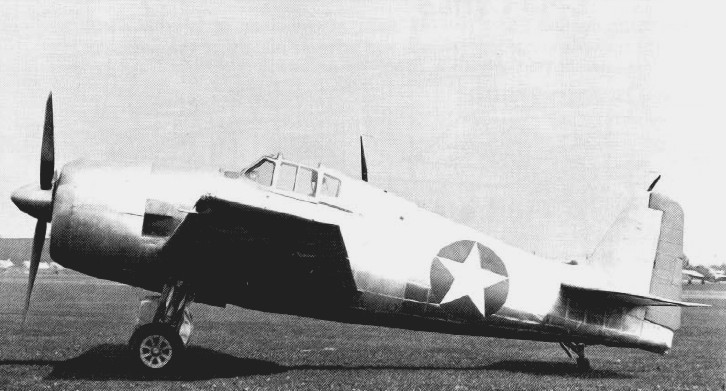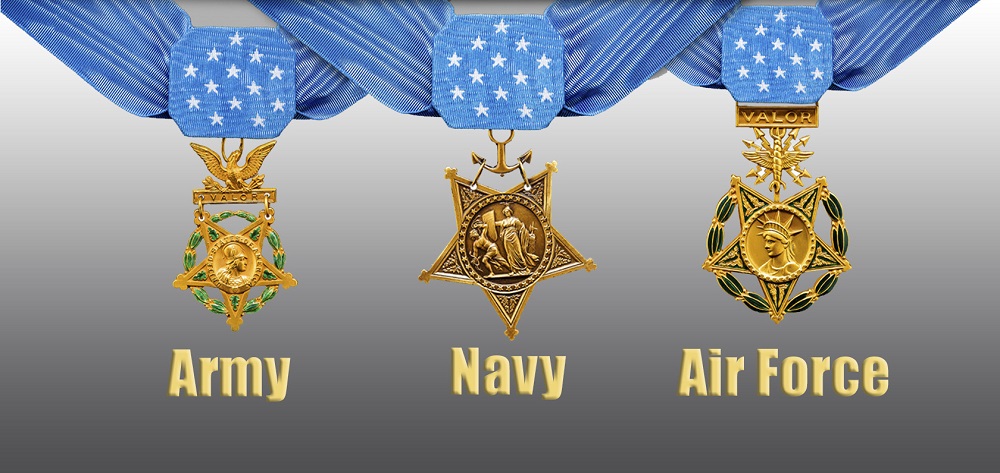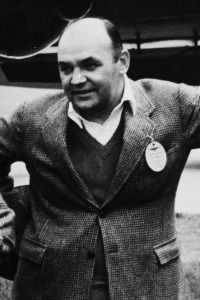|
Grumman F6F
The Grumman F6F Hellcat is an American carrier-based fighter aircraft of World War II. Designed to replace the earlier F4F Wildcat and to counter the Japanese Mitsubishi A6M Zero, it was the United States Navy's dominant fighter in the second half of the Pacific War. In gaining that role, it prevailed over its faster competitor, the Vought F4U Corsair, which initially had problems with visibility and carrier landings. Powered by a Pratt & Whitney R-2800 Double Wasp, the same powerplant used for both the Corsair and the United States Army Air Forces (USAAF) Republic P-47 Thunderbolt fighters, the F6F was an entirely new design, but it still resembled the Wildcat in many ways. Some military observers tagged the Hellcat as the "Wildcat's big brother".Sullivan 1979, p. 4. The F6F made its combat debut in September 1943. It subsequently established itself as a rugged, well-designed carrier fighter, which was able to outperform the A6M Zero and help secure air superiority over the ... [...More Info...] [...Related Items...] OR: [Wikipedia] [Google] [Baidu] |
Carrier-based Aircraft
Carrier-based aircraft, sometimes known as carrier-capable aircraft or carrier-borne aircraft, are naval aircraft designed for operations from aircraft carriers. They must be able to launch in a short distance and be sturdy enough to withstand the abrupt forces of launching from and recovering on a pitching deck. In addition, their wings are generally able to fold up, easing operations in tight quarters. Such aircraft are designed for many purposes including air-to-air combat, surface attack, anti-submarine warfare (ASW), search and rescue (SAR), transport (COD), weather observation, reconnaissance and airborne early warning and control (AEW&C) duties.Fred T Jane (2005). ''Jane's All the World's Aircraft''. Jane's Information Group. The term is generally applied only to fixed-wing aircraft, as naval helicopters are able to operate from a wider variety of ships, including helicopter carriers, destroyers, frigates and container ships. History The 1903 advent of fixed-w ... [...More Info...] [...Related Items...] OR: [Wikipedia] [Google] [Baidu] |
Pacific Ocean Theater Of World War II
The Pacific Ocean is the largest and deepest of Earth's five oceanic divisions. It extends from the Arctic Ocean in the north to the Southern Ocean (or, depending on definition, to Antarctica) in the south, and is bounded by the continents of Asia and Oceania in the west and the Americas in the east. At in area (as defined with a southern Antarctic border), this largest division of the World Ocean—and, in turn, the hydrosphere—covers about 46% of Earth's water surface and about 32% of its total surface area, larger than Earth's entire land area combined .Pacific Ocean . '' Britannica Concise.'' 2008: Encyclopædia Britannica, Inc. The centers of both the |
Medal Of Honor
The Medal of Honor (MOH) is the United States Armed Forces' highest military decoration and is awarded to recognize American soldiers, sailors, marines, airmen, guardians and coast guardsmen who have distinguished themselves by acts of valor. The medal is normally awarded by the president of the United States, but as it is presented "in the name of the United States Congress", it is sometimes erroneously referred to as the "Congressional Medal of Honor". There are three distinct variants of the medal: one for the Department of the Army, awarded to soldiers, one for the Department of the Navy, awarded to sailors, marines, and coast guardsmen, and one for the Department of the Air Force, awarded to airmen and guardians. The Medal of Honor was introduced for the Department of the Navy in 1861, soon followed by the Department of the Army's version in 1862. The Department of the Air Force used the Department of the Army's version until they received their own distinctive versi ... [...More Info...] [...Related Items...] OR: [Wikipedia] [Google] [Baidu] |
Edward O'Hare
Lieutenant Commander Edward Henry O'Hare (March 13, 1914 – November 26, 1943) was an American naval aviator of the United States Navy, who on February 20, 1942, became the Navy's first fighter ace of the war when he single-handedly attacked a formation of nine heavy bombers approaching his aircraft carrier. Even though he had a limited amount of ammunition, he was credited with shooting down five enemy bombers and became the first naval aviator recipient of the Medal of Honor in World War II. O'Hare's final action took place on the night of November 26, 1943, while he was leading the U.S. Navy's first-ever nighttime fighter attack launched from an aircraft carrier. During this encounter with a group of Japanese torpedo bombers, O'Hare's Grumman F6F Hellcat was shot down; his aircraft was never found. In 1945, the U.S. Navy destroyer was named in his honor. On September 19, 1949, the Chicago-area Orchard Depot Airport was renamed O'Hare International Airport, six years after ... [...More Info...] [...Related Items...] OR: [Wikipedia] [Google] [Baidu] |
Bureau Of Aeronautics
The Bureau of Aeronautics (BuAer) was the U.S. Navy's material-support organization for naval aviation from 1921 to 1959. The bureau had "cognizance" (''i.e.'', responsibility) for the design, procurement, and support of naval aircraft and related systems. Aerial weapons, however, were under the cognizance of the Navy's Bureau of Ordnance (BuOrd). Origins The USN's first attempt for naval aviation began in 1908 when it conducted observations of the Wright Brothers aircraft at Fort Myer, Virginia.https://www.history.navy.mil/content/dam/nhhc/research/histories/naval-aviation/pdf/History%20(1).pdf First tests and Naval Aviation Corps The first test of an aircraft from naval vessel was in 1910 when a Curtiss Model D flown by Eugene Burton Ely took off from the USS Birmingham (CL-2) and again on USS Pennsylvania (ACR-4) in early 1911. These test was enough for the USN to establish naval aviation units in the summer of 1911. The purchase of the first naval aircraft in May 1911 an ... [...More Info...] [...Related Items...] OR: [Wikipedia] [Google] [Baidu] |
Jake Swirbul
Leon Albert "Jake" "The Bullfrog" Swirbul (March 18, 1898 – June 28, 1960), was an aviation pioneer and co-founder of Grumman Aircraft Engineering Corporation. Biography Swirbul was born in the Yorkville section of Manhattan. His parents Frederiks Zvirbulis and Lena (Dannenberga) Zvirbule were immigrants from Latvia. His family moved to Long Island when he was a child. He grew up in Sag Harbor and graduated from Pierson High School. He attended Cornell University until 1917 when he left school to enlist in the U.S. Marine Corps. Jake Swirbul and Leroy Grumman met in 1924 at Loening Aeronautical Engineering Co. in New York City, one of the many small aircraft firms that sprang up after World War I. When the firm's Manhattan factory was closed after its sale to Keystone Aircraft in 1929, Swirbul and Grumman decided to form their own company. Grumman mortgaged his house to contribute $16,875, and Swirbul contributed $8,125. Two other Loening employees, William Schwendler and E ... [...More Info...] [...Related Items...] OR: [Wikipedia] [Google] [Baidu] |
Leroy Grumman
Leroy Randle "Roy" Grumman (4 January 1895 – 4 October 1982) was an American aeronautical engineer, test pilot, and industrialist. In 1929, he co-founded Grumman Aircraft Engineering Co., later renamed Grumman Aerospace Corporation, and now part of Northrop Grumman."The Embattled Farmers." ''Time'', 11 September 1944. Retrieved: 17 March 2009. Early life Grumman was born in . His forebears had Connecticut roots and owned a brewery. When he was a child, his father, George Tyson Grumman, owned and operated a carriage shop, and later worked for the post office.[...More Info...] [...Related Items...] OR: [Wikipedia] [Google] [Baidu] |
Grumman FF
The Grumman FF "Fifi" (company designation G-5) was an American biplane fighter aircraft operated by the United States Navy during the 1930s.Eden and Moeng 2002, p. 762. It was the first carrier aircraft with retractable landing gear.Winchester 2002, p. 21. It was produced under licence in Canada and known as the Goblin in Canadian service and Delfín (English: "Dolphin") in Spanish service. Design and development The ''FF-1'' was Grumman’s first complete aircraft design for the US Navy. The Navy had asked Grumman if their retractable landing gear made for the O2U-1 Scout planes could be retrofitted to the Navy's Boeing F4B-1 fighters; instead Grumman proposed a new fighter design. The prototype ''XFF-1'' (serial number A8878) was built to a contract placed on 22 April 1931, first flying on 29 December of that year,Cacutt 1989, p. 155–162.Swanborough and Bowers 1976, p. 195. a two-seat design, with an enclosed cockpit, fuselage of all-metal construction, and wings covered l ... [...More Info...] [...Related Items...] OR: [Wikipedia] [Google] [Baidu] |
Landing Gear
Landing gear is the undercarriage of an aircraft or spacecraft that is used for takeoff or landing. For aircraft it is generally needed for both. It was also formerly called ''alighting gear'' by some manufacturers, such as the Glenn L. Martin Company. For aircraft, Stinton makes the terminology distinction ''undercarriage (British) = landing gear (US)''. For aircraft, the landing gear supports the craft when it is not flying, allowing it to take off, land, and taxi without damage. Wheeled landing gear is the most common, with skis or floats needed to operate from snow/ice/water and skids for vertical operation on land. Faster aircraft have retractable undercarriages, which fold away during flight to reduce drag. Some unusual landing gear have been evaluated experimentally. These include: no landing gear (to save weight), made possible by operating from a catapult cradle and flexible landing deck: air cushion (to enable operation over a wide range of ground obstacles and wat ... [...More Info...] [...Related Items...] OR: [Wikipedia] [Google] [Baidu] |
Grumman TBF Avenger
The Grumman TBF Avenger (designated TBM for aircraft manufactured by General Motors) is an American World War II-era torpedo bomber developed initially for the United States Navy and Marine Corps, and eventually used by several air and naval aviation services around the world. The Avenger entered U.S. service in 1942, and first saw action during the Battle of Midway. Despite the loss of five of the six Avengers on its combat debut, it survived in service to become the most effective and widely-used torpedo bomber of World War II, sharing credit for sinking the super-battleships and (the only ships of that type sunk exclusively by American aircraft while under way) and being credited for sinking 30 submarines. Greatly modified after the war, it remained in use until the 1960s.Wheeler 1992, p. 53. Design and development The Douglas TBD Devastator, the U.S. Navy's main torpedo bomber introduced in 1935, was obsolescent by 1939. Bids were accepted from several companies, but Gru ... [...More Info...] [...Related Items...] OR: [Wikipedia] [Google] [Baidu] |
Wright R-2600
The Wright R-2600 Cyclone 14 (also called Twin Cyclone) is an American radial engine developed by Curtiss-Wright and widely used in aircraft in the 1930s and 1940s. History In 1935, Curtiss-Wright began work on a more powerful version of their successful R-1820 Cyclone 9. The result was the R-2600 Twin Cyclone, with 14 cylinders arranged in two rows. The R-2600-3 was originally intended for the C-46 Commando (being fitted to the prototype CW-20A). It was also the original engine choice for the F6F Hellcat; a running change (one which would not stop production) for the CW-20A, and one in late April 1942 for the second XF6F-1, led to the adoption of the Pratt & Whitney R-2800 Double Wasp in the R-2600's place for both designs. The Twin Cyclone went on to power several important American World War II aircraft, including the A-20 Havoc, B-25 Mitchell, TBF Avenger, SB2C Helldiver, and the PBM Mariner. Over 50,000 R-2600s were built at plants in Paterson, New Jersey, and Cinci ... [...More Info...] [...Related Items...] OR: [Wikipedia] [Google] [Baidu] |
Ray Wagner Collection Image (16156795450)
Ray may refer to: Fish * Ray (fish), any cartilaginous fish of the superorder Batoidea * Ray (fish fin anatomy), a bony or horny spine on a fin Science and mathematics * Ray (geometry), half of a line proceeding from an initial point * Ray (graph theory), an infinite sequence of vertices such that each vertex appears at most once in the sequence and each two consecutive vertices in the sequence are the two endpoints of an edge in the graph * Ray (optics), an idealized narrow beam of light * Ray (quantum theory), an equivalence class of state-vectors representing the same state Arts and entertainment Music * The Rays, an American musical group active in the 1950s * Ray (musician), stage name of Japanese singer Reika Nakayama (born 1990) * Ray J, stage name of singer William Ray Norwood, Jr. (born 1981) * ''Ray'' (Bump of Chicken album) * ''Ray'' (Frazier Chorus album) * ''Ray'' (L'Arc-en-Ciel album) * ''Rays'' (Michael Nesmith album) (former Monkee) * ''Ray'' (soundtrack), a ... [...More Info...] [...Related Items...] OR: [Wikipedia] [Google] [Baidu] |


.jpg)




